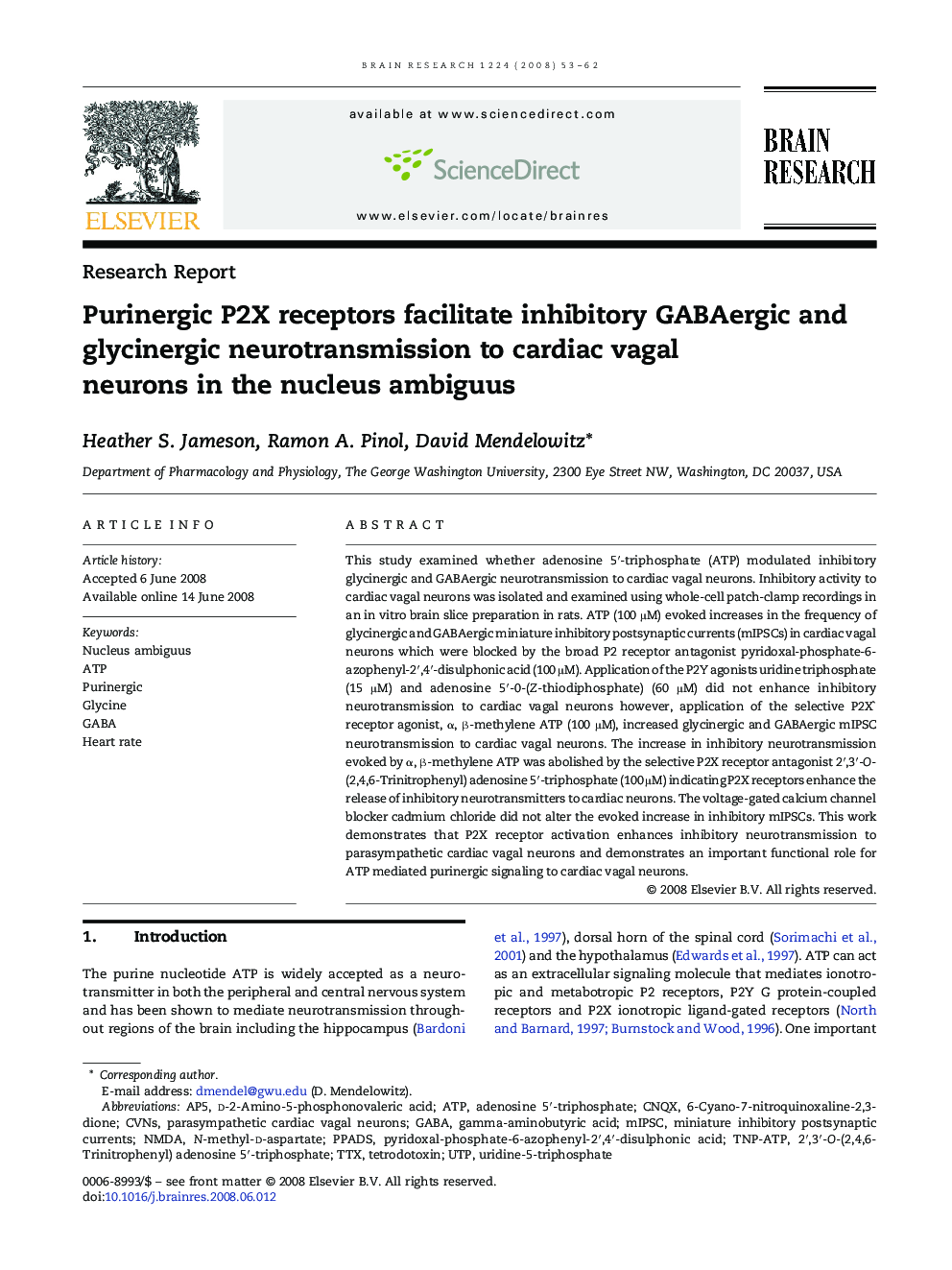| Article ID | Journal | Published Year | Pages | File Type |
|---|---|---|---|---|
| 4329311 | Brain Research | 2008 | 10 Pages |
This study examined whether adenosine 5′-triphosphate (ATP) modulated inhibitory glycinergic and GABAergic neurotransmission to cardiac vagal neurons. Inhibitory activity to cardiac vagal neurons was isolated and examined using whole-cell patch-clamp recordings in an in vitro brain slice preparation in rats. ATP (100 μM) evoked increases in the frequency of glycinergic and GABAergic miniature inhibitory postsynaptic currents (mIPSCs) in cardiac vagal neurons which were blocked by the broad P2 receptor antagonist pyridoxal-phosphate-6-azophenyl-2′,4′-disulphonic acid (100 μM). Application of the P2Y agonists uridine triphosphate (15 μM) and adenosine 5′-0-(Z-thiodiphosphate) (60 μM) did not enhance inhibitory neurotransmission to cardiac vagal neurons however, application of the selective P2X` receptor agonist, α, β-methylene ATP (100 μM), increased glycinergic and GABAergic mIPSC neurotransmission to cardiac vagal neurons. The increase in inhibitory neurotransmission evoked by α, β-methylene ATP was abolished by the selective P2X receptor antagonist 2′,3′-O-(2,4,6-Trinitrophenyl) adenosine 5′-triphosphate (100 μM) indicating P2X receptors enhance the release of inhibitory neurotransmitters to cardiac neurons. The voltage-gated calcium channel blocker cadmium chloride did not alter the evoked increase in inhibitory mIPSCs. This work demonstrates that P2X receptor activation enhances inhibitory neurotransmission to parasympathetic cardiac vagal neurons and demonstrates an important functional role for ATP mediated purinergic signaling to cardiac vagal neurons.
